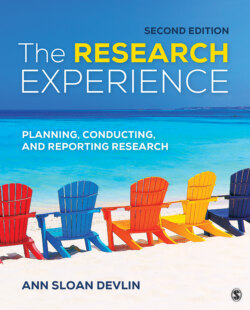Читать книгу The Research Experience - Ann Sloan Devlin - Страница 16
Humans Want to Confirm Hypotheses
ОглавлениеWhat we have available in memory influences us in other important ways, specifically when we think about ways to confirm our hypotheses rather than when we think of ways to disconfirm them. Figure 1.3 shows a well-known example of our preference for thinking about information in terms of the way it is presented: the Wason Selection Task (Wason, 1966, 1968). This task involves making decisions about two-sided cards. This task has many variations, but in one version (Figure 1.3), people are told the following: These cards have two sides: a letter of the alphabet on one side and a number on the other. Then people are told a “rule,” and their job is to make sure the rule is being followed. Here is the rule: If there’s a vowel on one side, there’s an even number on the other.
Figure 1.3 Example of Wason Selection Task
Then they are asked:
Which card or cards do you have to turn over to make sure the rule is being followed?
Why? One reason is that people heard the statement, “If there’s a vowel …,” and so what do they see? They see a vowel (E). They have a vowel available (think availability heuristic), and it seems logical to investigate the other side of that card. And they are correct, at least to that point; they should turn over the E. But they must also turn over the 7 to make sure that there is no vowel on the other side of that card. People don’t do that; they don’t think to disconfirm the rule.
